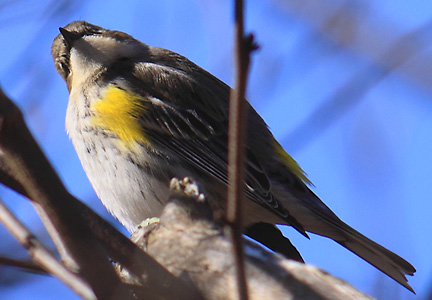
of course, i'm referring to those cute little yellow-rumped warblers that are just everywhere this time of year.
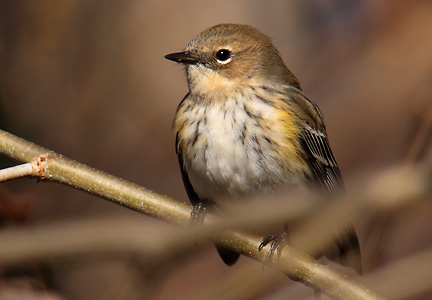
with the underwhelming amount of insects that are frolicking about during the winter, these little foragers are resigned to gobbling up berries, which include bayberry, wax myrtle, juniper, the 'poison' plants (ivy and oak), virginia creeper, and dogwood, to name a few.
they're active little buggers, too, flitting from branch to branch, tree to tree, in search of food — but not so active that they don't allow time for me to snap a couple of decent glamour shots. they're a good-looking bird and they know it.
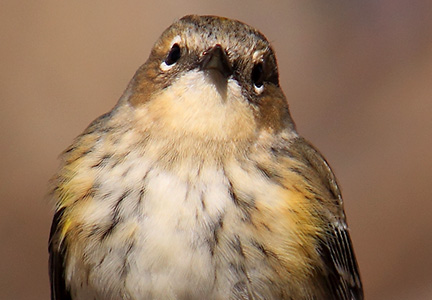
that's right… i was talking about you.
here, i got his good side. well...all of his good sides, actually.
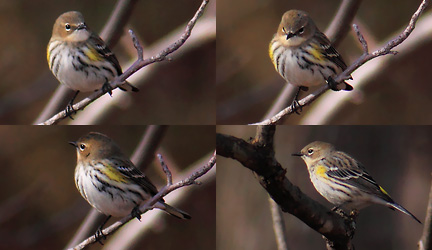
in spring, look for a morph of bright, contrasty colors and patterns, much more pronounced than their winter plumage. they're most easily identified by the bright yellow patch on their rump, hence their common name, and their endearing nickname of "butter-butt."
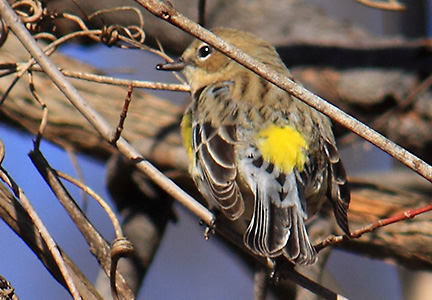
secondary identifying marks are the patches of yellow on either side of their breast under the wing and the dark streaking or patches that sweep down, out and away from their neck, and follow the curve of their wings. males are predominantly more gray overall, their yellow more vibrant, and their streaking can more accurately be described as dark patches. some have very pronounced "masks" around their eyes, like a raccoon, or, to deviate slightly from the wildlife theme of this post, like zorro. females resemble males, only slightly duller and sometimes having more of a dull brown cast. both sexes may also reveal a yellow patch on the top of their heads. juveniles resemble females. butter-butts have rounded tail feathers, and on the underside, dark grey, brown, or black with a thick white band above just above the tip.
you know, i started this post by introducing 'mr.' butt, but it very well could be mrs. butt. then again, it could really be 'mr.', as in 'mr. first-winter-morph butt' — turns out that males in their first winter have a dull brownish appearance. and, if this isn't enough to make positive identification a little tricky (at least where the sex is concerned), throw in the myrtle and audobon forms. a white throat patch gives away the myrtle form; a deep yellow throat patch, the audobon.
when i'm photographing them, though, they're all just butter-butts to me. i draw no hard lines. however, this is good information to know if, say, someone were to kidnap your wife and hold her for ransom, giving her back to you only if you are able to positively identify the species, sex, and form of this bird in a photograph he is holding.







1 comment:
Doug, these warbler photos are the best I've seen. I don't remember what camera gear you are using but whatever it is, it's working for you! Or, your are working it well!
Learning about the "ordinary birds" is fun. A year go, in West Virginia, I saw 37 life birds - mostly warblers and they are the most beautiful birds...
Enjoy.
Post a Comment
let me know what you think. unlike most people, i care.